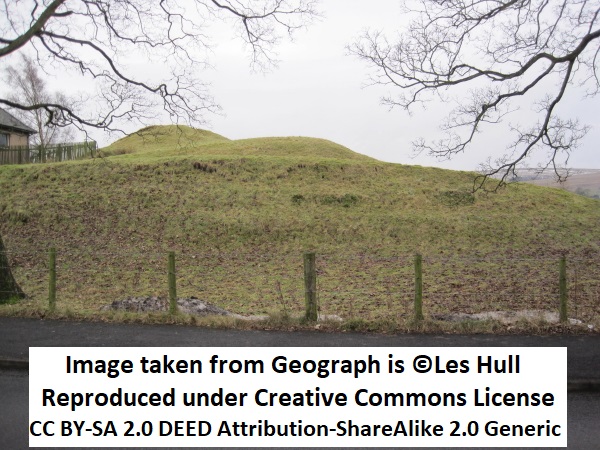Bellingham Castle

Bellingham Castle Details
Bellingham Castle, earthworks of a twelfth century castle sacked by the Scots and abandoned in the 14th century
- Closest To: Bellingham, Redesmouth
- Access: Occasional Access
- Grid Reference: NY841833
Bellingham Castle is a badly mutilated earthwork which survives as a mound on top of high ground to the south of the village. The mound as it survives is roughly kite-shaped, with a curved end facing north-east and the tapering point to the south-west. This is sited on top of a level piece of high ground which seems to have been landscaped on all sides except the south, where it slopes gently away across an area of rig and furrow earthworks. It is not accessible to the public and sits in a field, but a public footpath runs a short distance to the west.
Repeatedly it is asserted that the castle here was a motte and bailey – but there is not actually any evidence supporting these statements, and there is insufficient left to determine the form that the castle took. However, a family taking the name de Bellingham held the manor here in the second half of the 13th century, the manor first appearing in the hands of the forester of King Alexander III, who held the manor as part of his barony of Tynedale, and who had supported the establishment of it as a manorial centre. Documentary evidence suggests that there was a strong dwelling here by the end of the 13th century, by which time Tynedale had been confiscated from the Kings of Scots. The presence of “Demesne Farm” adjacent probably reflects the manorial complex nearby, which was granted to the Bellingham family outright by King Richard II under the name “Hallsfield”, but it is likely that any castle or tower at the manor fell out of use by the 16th century at latest, by which time it was held by tenants of the Radclyffe family of Dilston, later Earls of Derwentwater.
Become a supporter of my work to access a more detailed history